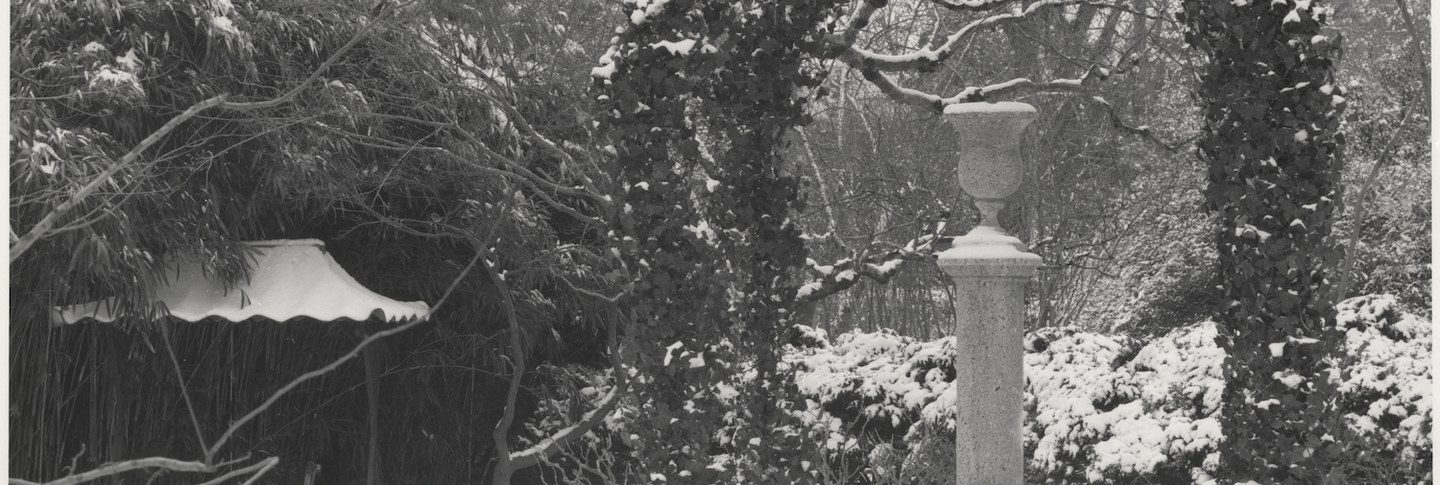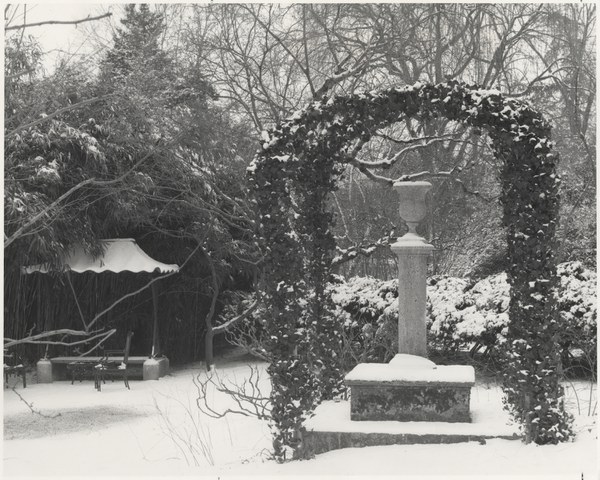Designed between 1931 and 1936, the Terrior Column is placed south of the Quatrefoil gate leading south from the Fountain Terrace. It lies at the end of a basketweave brick walk, terminating the Fountain Terrace’s southern vista. A screen of bamboo, the East Lawn, and brick walls along Lover’s Lane and R Street provide a backdrop to the Terrior Column and its surroundings. The Terrior Column and enclosure was planned as a small, quiet space for reading and resting outside of the heavily trafficked garden rooms.
Mildred Bliss brought the idea for the Italian column and enclosure back with her from a visit to Naples, where she viewed the original and admired its romantic backstory. During the Napoleonic Wars, a French Admiral fell in love with a Neapolitan girl. Separated by a language barrier, the Admiral won the girl over by visiting her often and bringing gifts. On one occasion, he brought her a little pet terrier. The girl referred to the dog in broken English as her “little terrior,” and the misnomer stuck. When the dog died, she built a monument over its grave, which the Neapolitans called the Terrior’s Tomb. Mildred Bliss replicated the pillar and pedestal of the monument at Dumbarton Oaks, and it marked the central feature of the Terrior enclosure.
Surrounding the column, Beatrix Farrand placed an arched wire bower planted with sweet autumn clematis, winter jasmine, and English ivy. Tall bamboo, which died back during the winters, framed the space and provided a sense of separation from the rest of the garden. In 1935–36, Farrand designed original furniture specifically for the Terrior Column. The highlight was a French Rococo swinging seat with lead canopy and metalwork featuring engraved animals from Aesop’s fables. The lead figures mimicked similar designs in the animal cages in the 18th-century zoo at Versailles. Other furniture included benches, a chair and table, and a table bench of Doria stone. Some time after 1949, Ruth Havey revised and mended the furniture. At that time, the swinging seat was replaced with a stationary bench below the canopy, to reduce the temptation to careless visitors.

